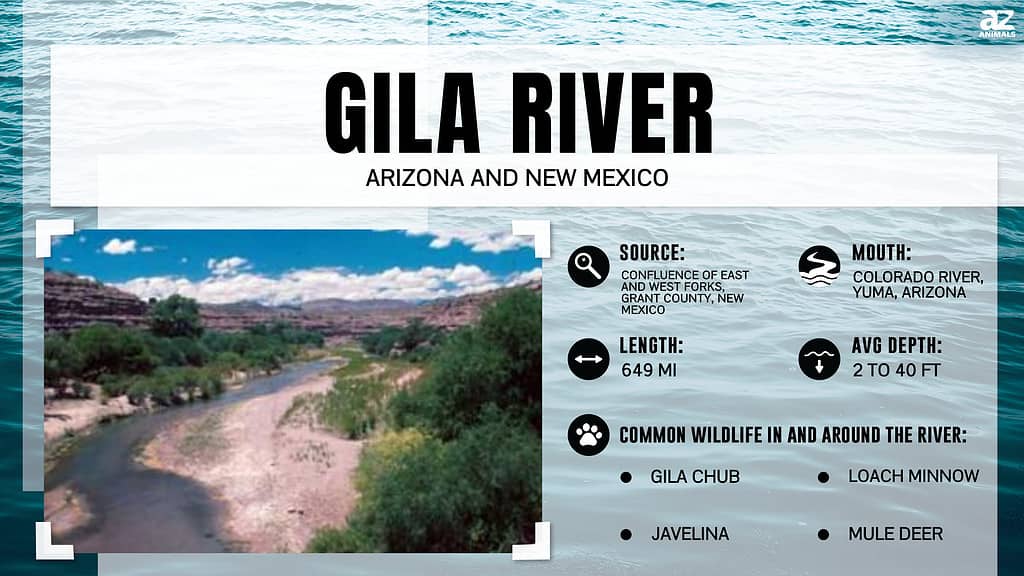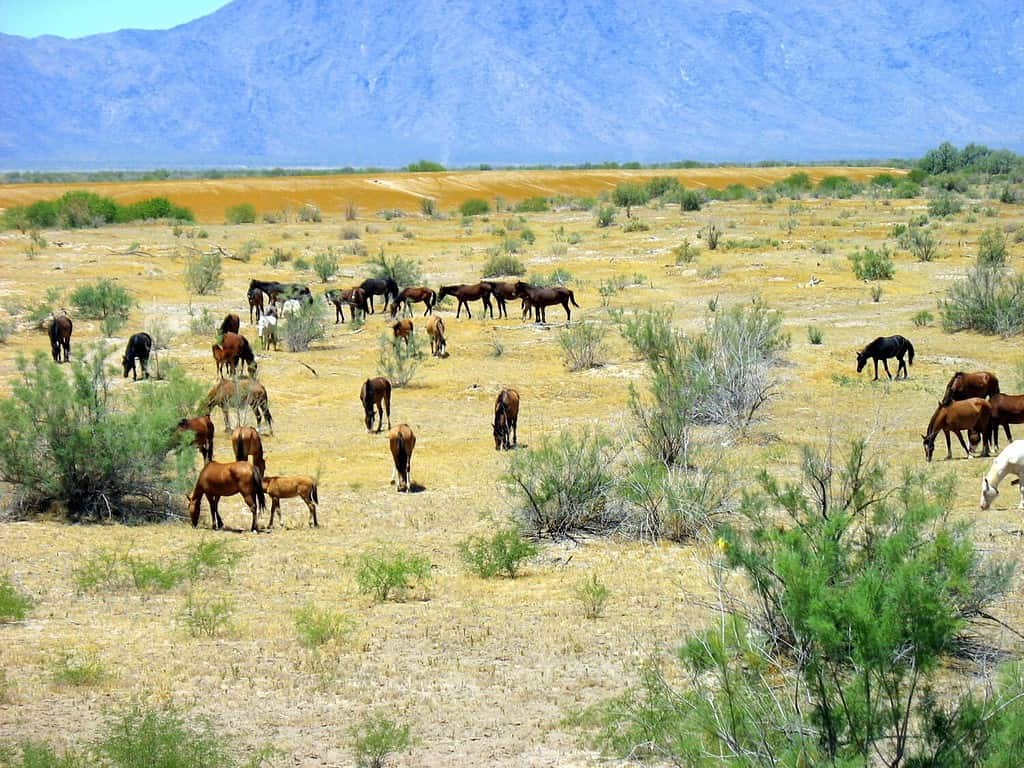The Gila River is a freshwater tributary of the Colorado River. This river flows through Arizona and New Mexico and is fed by several tributaries. It is a highly biodiverse and historical water source with recreational attractions along the upper section of the river.
As one of the longest rivers in the western United States, many people wonder how deep it is. This article details everything you need to know about this interesting U.S. river.
Size, Depth, and Formation

The Gila River is a southern snow-fed body of water formed from springs and snowmelts. The source lies in New Mexico’s Sierra County, and it flows through the Gila National Forest to the Gila Cliff Dwellings Monument and past Safford, Arizona. This river has three main forks – the West Fork, Middle Fork, and East Fork.
It is impounded by the Coolidge Dam in Arizona, which is located on the Gila River. The river flows for over 600 miles west through the Sonoran Desert in Arizona to its mouth in the Colorado River.
Although most of the river flows through the United States, about 2.8% of its watershed and two of its tributaries’ headwaters are located in Mexico. As a long river, it is fed by at least six different tributaries and stretches for 649 miles.
Some sources suggest that the Gila River had a historical depth of 2 to 40 feet and a width between 150 to 1,200 feet. The depth varies depending on rainfall and flooding. At one point, it was shallower than usual and dried up about halfway from large irrigation diversions. While the river is long, it is not very deep, and some sections are so shallow that you can clearly see the bottom. Most of it is usually dried up along the 500-mile mark.
Gila River Size Comparison
The Gila River might not be very deep, but it has an extensive drainage basin of about 58,100 square miles. This river’s drainage basin is larger than the Green Rivers, the chief tributary of the Colorado River. However, the Green River, which spans 730 miles through Wyoming and Utah, is significantly longer and deeper in comparison.
The Gila River is roughly four times larger than the Salmon River drainage basin in Idaho which only covers 14,000 square miles. The Colorado River is much larger than the Gila River both in length and drainage area. The Gila River is only half as long as the Colorado River, with a drainage basin nearly four times smaller.
Ecology of the Gila River

Various species call the Gila River home. The river has a high biodiversity and several endangered species.
©Around the World Photos/Shutterstock.com
The Gila River has a rich biodiversity and is home to several endangered species. You can find a diverse range of fauna and flora in and surrounding the area. It is one of the few rivers that does not have an impeding dam, making it the last free-flowing river in New Mexico.
The river is home to various aquatic life, such as the previously endangered Gila trout and the currently endangered Gila chub. Other endangered fish include spikedace.
The river has an abundance of rainbow trout, smallmouth bass, and brown trout. Surrounding the river are wild turkeys, reptiles, eagles, deer, and dusky grouse.
Interestingly, this river is renowned for its bird populations and the diverse habitats it offers to its endangered species. You can find endangered birds like the southwestern willow flycatcher and yellow-billed cuckoos.
Conclusion: What Does the Gila River Have to Offer?
The Gila River offers more than just a home for numerous species of plants and animals. Humans benefit from the river too, whether as a water source or for recreational and agricultural use. The river has a historical background and was home to several indigenous tribes who settled near it.
The photo featured at the top of this post is © ca2hill/iStock via Getty Images
Thank you for reading! Have some feedback for us? Contact the AZ Animals editorial team.







